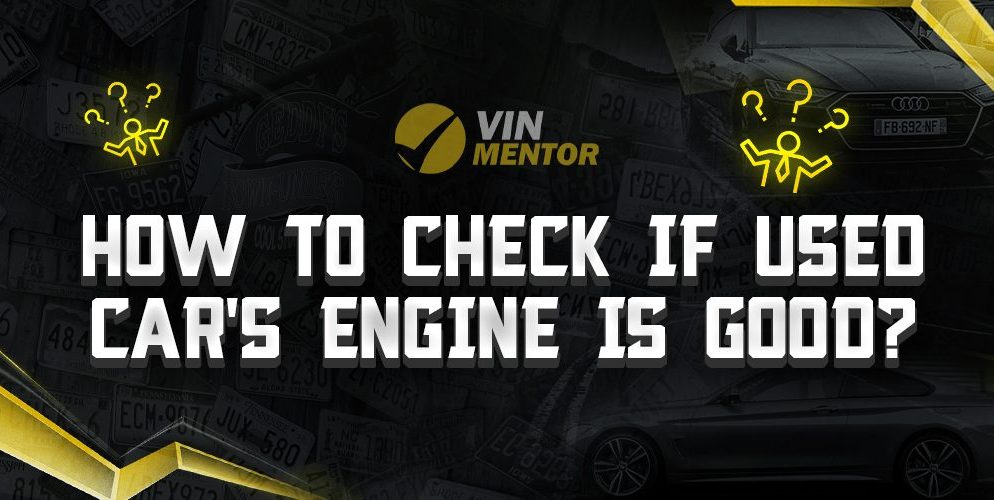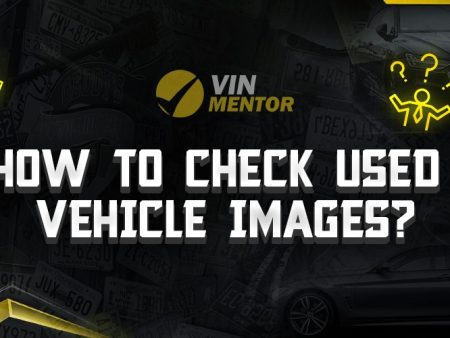

There are several methods to determine whether a used automobile is in good condition if you’re looking for one. The state of the engine is a crucial area to examine. Even though a car may appear neat and orderly from the outside, the bonnet may be masking a variety of sins that might later cause issues and costly repairs.
Key Takeaways
To check if a used car engine is good:
- Look for visible signs of damage.
- Check the oil.
- Test the compression.
- Take it for a test drive.
- Bring a mechanic with you to check the engine.
We’ll discuss some of these tips in the next section.
Ways to Check If A Used Car’s Engine is Good
Purchasing a used engine can be a cost-effective option for repairing or replacing a damaged engine. Still, it’s important to ensure that the engine is in good condition before making the purchase.
Here are some steps to follow to check if a used engine is good:
- Examine the Engine Visually
Start by inspecting the engine for any visible signs of damage, such as cracks, dents, or leaks. These may indicate that the engine has been damaged or is in poor condition. Pay particular attention to areas such as the cylinder head and block, as these are important components of the engine and are prone to damage.
- Check the Oil
The oil level and condition can be a good indicator of the engine’s overall health. If the oil is dirty or at a low level, it could be a sign that the engine has not been well-maintained. It’s important to use a dipstick to check the oil level and ensure that the oil is clean and clear, as dirty or murky oil may indicate that the engine has been neglected or has suffered damage.
- Test the Compression
The compression of an engine can be an important indicator of its overall condition. To check the compression, remove the spark plugs and perform a compression test. This can help you determine if the engine is in good condition and if the cylinders are sealing properly.
A healthy engine should have relatively even compression across all cylinders, with values within a reasonable range for the specific engine.
- Inspect the Belts and Hoses
The belts and hoses of an engine can be prone to wear and tear, so it’s important to inspect them for any signs of cracking or other damage. These components are responsible for various functions, such as driving the alternator and water pump, so any issues with them can have serious consequences for the engine.
- Listen for Strange Noises
Start the engine and listen for any unusual noises, such as knocking or ticking. These may indicate that the engine has damaged parts or is not running smoothly. It’s important to listen to these noises and address any issues as soon as possible to prevent further damage to the engine.
- Check for Engine Codes
Many engines are equipped with onboard diagnostic systems that can generate codes if there is a problem with the engine. These codes can be read using a diagnostic tool, providing valuable information about the engine’s health.
- Look at the Engine’s Overall Condition
Consider the overall condition of the engine. If it appears to be in good condition and has been well-maintained, it is more likely to be a good purchase. Look for signs of wear and tear on the engine, such as scratches or scuff marks, and check for any visible signs of neglect or abuse.
- Consider the Car’s Maintenance History
If possible, try to get as much information as you can about the car’s maintenance history. This can include information about when the oil was last changed, if the car has had regular tune-ups and if any major repairs have been completed. A car with a good maintenance history is more likely to have a well-maintained engine.
- Drive the Car
Take the car for a test drive to get a feel for how it handles and performs. Pay attention to any strange noises or issues with acceleration or braking. These can be indicators of problems with the engine or other components of the car.
- Check Engine Light
If the check engine light comes on, it could indicate that there is a problem with the engine. It’s important to diagnose and fix the issue as soon as possible to prevent further damage.
- Have a Professional Mechanic Inspect the Engine
If you are unsure about the condition of the engine, it can be helpful to have a professional mechanic inspect it. A mechanic will be able to provide an expert opinion on the engine’s condition and identify any potential issues that may not be immediately apparent.
- Odor Coming from the Engine
When you go to see a used automobile, you have to start the engine and go for a short drive. Stop the vehicle after the trip, lift the hood, and sniff the engine for any odors. The engine may occasionally emit a burning smell, which indicates incomplete combustion and low oil levels. Burning odors are another indicator of worn engine parts.
- Check the Car’s Bottom
When presenting a customer with a used car, vendors frequently wash or polish the vehicle. They neglect to wash the car’s undercarriage, though. Look for any indications of damage on the vehicle’s bottom. While you may overlook obvious oily or dirty stains, if there are visible fluid droplets or drips, it is a symptom of damage.
Under the car, look for any moist areas or clumps of oil sludge. It’s normal to still have some dirt from earlier problems. However, you should pay attention to what you’re seeing because fresh, damp dirt or oil might indicate some issues. Don’t be afraid to examine items closely to see if they are caked on, muddy, slimy, or drippy.
Conclusion
Overall, it’s important to take the time to carefully inspect a used engine before making a purchase to ensure that it is in good condition. By following these steps and using the advice of a professional mechanic, you can increase your chances of getting a good deal.












